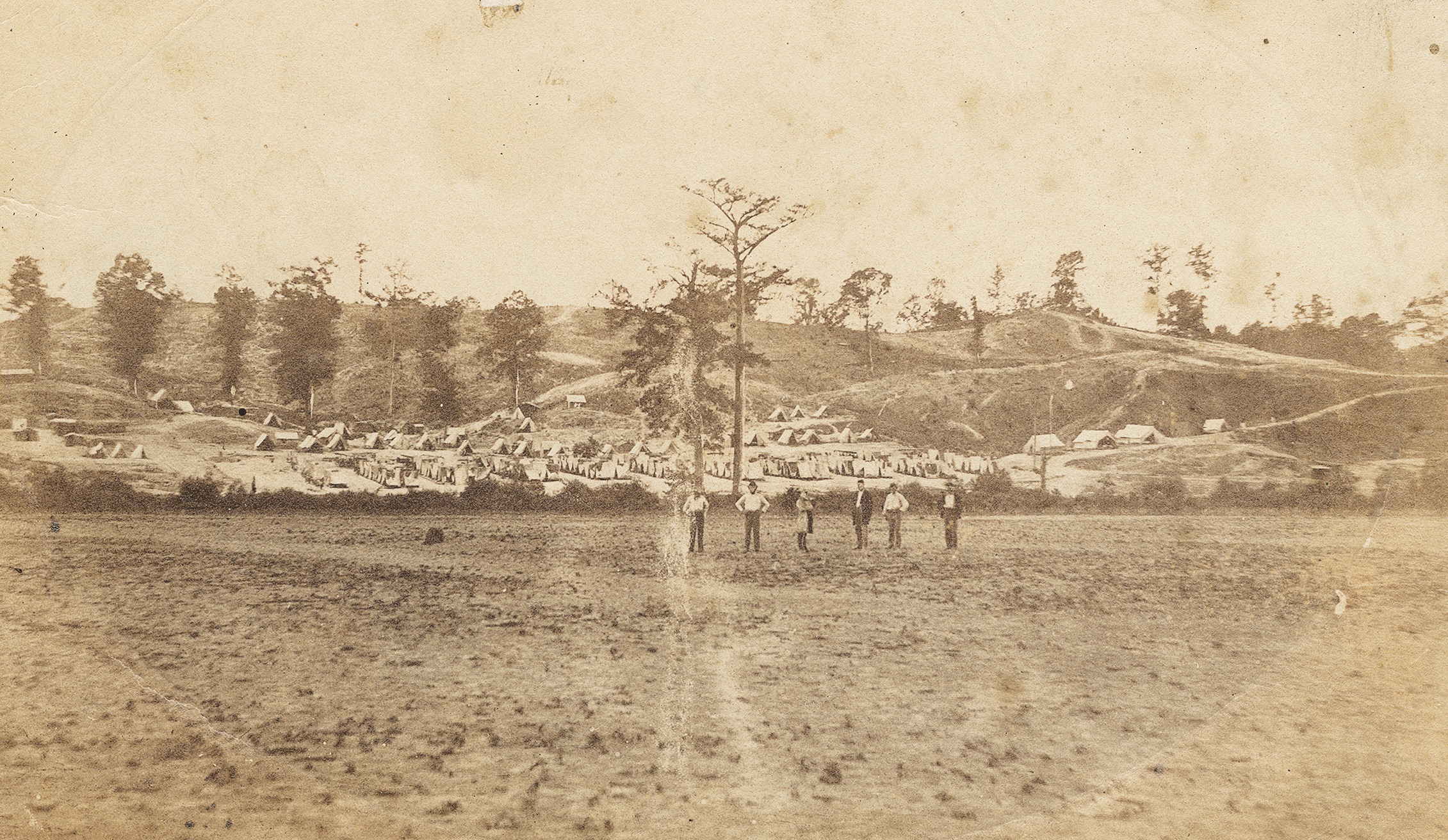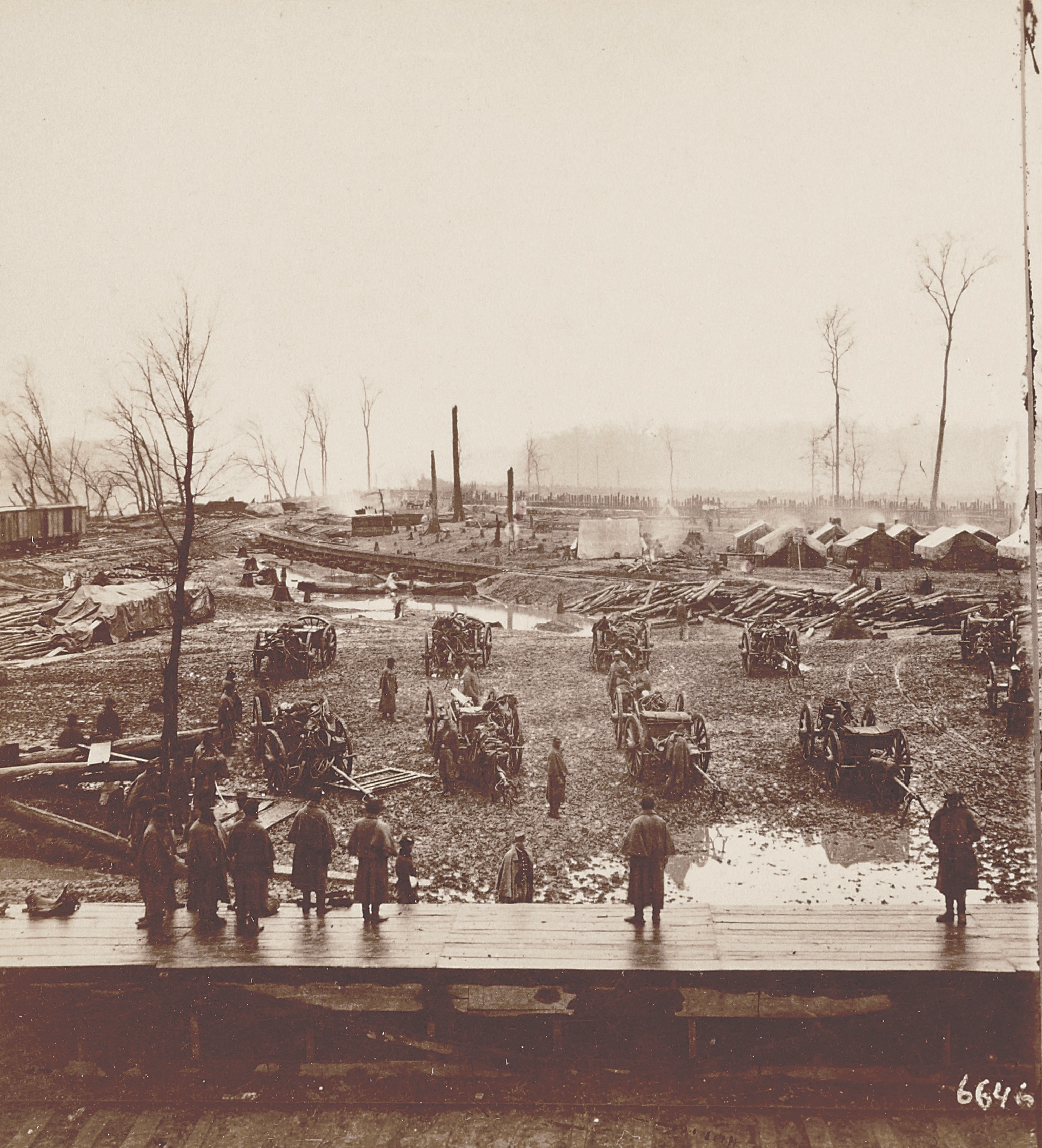Scholarship on Civil War soldiers has explored in detail the experience and long-term impact of combat. Disease, hard marching, and exposure to the elements took a toll, but above all, as one scholar put it, “the major psychological trauma that Civil War soldiers encountered related to the terror of battle.”
This literature raises an obvious question: What about soldiers who never really “saw the elephant?” What did it mean to have little or no chance of engagement? On the Union side, William F. Fox’s classic Regimental Losses in the American Civil War, 1861-1865 highlights strikingly disparate types of service. The Army of the Potomac’s 2nd Corps anchored one end of the spectrum. It contained 35 of the 100 Union regiments that lost the most men in battle, as well as units with the highest percentage loss in any battle and largest numerical loss in one battle and for the whole war. On the other hand, Fox estimates the United States fielded more than “300 regiments which were not in action, with as many more which were under fire but a few times. A large part of the Union Army was used in protecting communications, guarding lines of supply, in garrison duty, and as armies of occupation.”
An emerging body of work examines Union soldiers who, in white regiments and USCT units, rendered at least part of their duty in occupying forces. Gregory P. Downs’ After Appomattox: Military Occupation and the Ends of War (2015) and Andrew F. Lang’s In the Wake of War: Military Occupation, Emancipation, and Civil War America (2017) reveal the inadequacy of seeking to understand Civil War soldiering through the creation of a universal template featuring battle.

Union troops occupied approximately 100 cities, towns, and hamlets across the Confederacy and in the loyal slaveholding states of Missouri, Kentucky, and Maryland. These soldiers dealt extensively with Confederate civilians, often had sustained contact with African-American refugees or residents, protected railroads and lines of communication, and mounted forays against local guerrillas. In large cities such as New Orleans and Nashville, they acted as police and represented a crucial component of the effort to start the process of Reconstruction.
White and black soldiers often reacted differently to occupation duty. A significant number of officers and enlisted men in white units resented their situation. They lamented having to deal with politics, counterinsurgency, boring garrison duty, and the complex process of emancipation. They had enlisted as citizen-soldiers, carrying out a civic responsibility to crush the rebellion and safeguard the revolutionary generation’s work (antislavery sentiment animated a very small percentage of the volunteers of 1861-65). But as occupiers they resembled British regulars who had menaced republican liberty during the Revolutionary era and helped create deep antipathy toward standing armies in the United States.
Charles O. Musser of the 29th Iowa Infantry groused in June 1864 of exile to Little Rock, Ark. Reading about the Overland Campaign in Virginia, he expressed a “wish we could be transferred to the ‘Army of the Potomac.’ I would rather go there and run the chances of being Shot than Stay here all Summer.” Most comrades in the regiment also wanted “a change of Department,” he added, and if the Virginia theater “is to be the decisive one of the war, we would like to participate in it.”
Another Iowan, Benjamin F. Mc-Intyre, wrote from near Brownsville, Texas, in April 1864 about unpleasant elements of occupation, some of which seemed only remotely connected to the task of saving the Union. “Upon our arrival [at] Santiago,” McIntyre’s regiment realized “there was daily labor for hundreds of men and which of necessity must have been performed by soldiers…forts and fortifications were to be made….Streets were to be swept and cleaned daily….” In this instance, African-American soldiers—he labeled them “the laborers of the Army”—would be assigned most of the tedious work. “I thank the originators of the Corps d’ Afrique,” stated McIntyre coldly, “for taking from us such labor as belongs to menials.”
Black occupation troops often displayed attitudes antithetical to those of white counterparts. Well aware that combat represented the ideal for citizen-soldiers, most USCT men nonetheless considered occupation a valuable dimension of the war effort. It placed them on the slaveholders’ ground, allowed them to provide a measure of protection for black refugees, and directly undermined governmental and social structures that sustained slavery. Whereas many white occupiers questioned the use of military forces to control Confederate civilians, USCT soldiers typically welcomed the opportunity to impose a harsh regime on their enemy’s home front.
The diary of William Woodlin of the 8th USCT describes an operation in Florida typical of innumerable others. A “three days tramp” in early June 1864 “brought in quite a large quantity of cattle & two prisoners who were taken to Jacksonville on the whole it was quite a successful foraging expedition. two adult Contrabands with their children were brought in, as well as a goodly No. of white trash whom we did not keep long….”
In May 1865, most U.S. soldiers believed their military obligation ceased. Congress reduced the size of the volunteer army from a million to only 11,000 within 18 months. The Regular Army by 1869 mustered just 37,000, many of them deployed in the West. These figures underscore how little support existed to create—and fund—a large army of occupation in the South. This reality lessened the possibility of equality across racial lines during Reconstruction and highlighted an ideology that limited the Army’s peacetime role in a constitutional republic.
This Insight column appeared in the June 2020 issue of Civil War Times.





